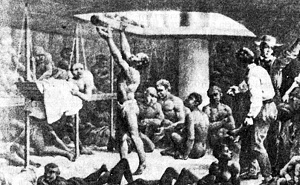 |
 |
 |
 |
 |
 |
 |
 |
 |
 |
 |
 |
 |
 |
 |

A Woe Like Winter
In American history, the development of black rights in America was remarkable, and at the beginning, slave narrative played a pivotal role in abolishing slavery. To end slavery, slave narratives described the cruelty of slavery including the lack of food, physical exploitation combined with inhuman labor, the family separation, and the sexual abuse of black women. Among the slave narratives, except for a few pages of documents, all had been written by male writers,the epitome being Narrative of the Life of Frederick Douglass, An American Slave (1845).
In this situation, Harriet Jacobs illustrates the cruelty of slavery for the first time in a woman’s point of view. InIncidents in the Life of a Slave Girl: Written by Herself, Jacobs states that black female slaves have a double burden, as women and slaves, compared to male slaves. In a situation where slaves are considered as chattel, not human, Jacobs criticizes what conventional value of the 19th century forces women to follow, which Barbara Welter defines as “piety, purity, submissiveness, and domesticity” (Yeo 201). In Incidents, Jacobs describes that black female slaves cannot follow the conventional role of the society because they are molested by their masters and cannot afford to have their own home and nurture children when they have to work for white families. Through her novel, Jacobs creates her alter ego, Linda Brent, to challenge the conventional female behavior which women followed to be considered as good women. This winter, I analyzed Incidents to explore how Jacobs opposed the existing behavior of women in the 19th-century and how it affected her reader.
Word Count: 270

